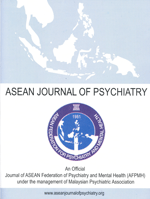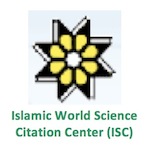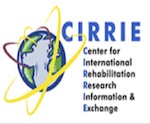


Google Scholar citation report
Citations : 5373
ASEAN Journal of Psychiatry received 5373 citations as per google scholar report
ASEAN Journal of Psychiatry peer review process verified at publons
| Journal Name | ASEAN Journal of Psychiatry (MyCite Report) | ||||
|---|---|---|---|---|---|
| Total Publications | 456 | ||||
| Total Citations | 5688 | ||||
| Total Non-self Citations | 12 | ||||
| Yearly Impact Factor | 0.93 | ||||
| 5-Year Impact Factor | 1.44 | ||||
| Immediacy Index | 0.1 | ||||
| Cited Half-life | 2.7 | ||||
| H-index | 30 | ||||
| Quartile |
|
- Anxiety Disorders
- Behavioural Science
- Biological Psychiatry
- Child and Adolescent Psychiatry
- Community Psychiatry
- Dementia
- Community Psychiatry
- Suicidal Behavior
- Social Psychiatry
- Psychiatry
- Psychiatry Diseases
- Psycho Trauma
- Posttraumatic Stress
- Psychiatric Symptoms
- Psychiatric Treatment
- Neurocognative Disorders (NCDs)
- Depression
- Mental Illness
- Neurological disorder
- Neurology
- Alzheimer's disease
- Parkinson's disease
Abstract
IDENTIFICATION AND RANKING OF FACTORS AFFECTING THE TENDENCY OF TEENAGERS AND YOUNG PEOPLE TO USE DRUGS ACCORDING TO EXPERTS IN THE FIELD OF QUITTING ADDICTION
Author(s): Najme SadeghiBackground and purpose: Drug addiction is a very important issue in most countries of the world and many studies and researches have been done to deal with this global problem. Various factors such as family, personality, social issues, culture, economy, environment and religion can affect the tendency to addiction. This research was conducted with the aim of identifying and ranking the factors affecting the tendency of teenagers and young people to use drugs according to the experts of quitting addiction. Research method: This research is applied in terms of purpose and "descriptive-exploratory" in terms of nature. The statistical population of this research includes professors and specialists active in the field of addiction counseling in Tehran. Using non-random sampling method, 30 experts participated in this research. Based on literature review in this field, a questionnaire based on 5-point Likert scale including 44 questions was designed. For this questionnaire, the validity of the questionnaire compared to the face validity and reliability of the questions was calculated and verified using Cronbach's alpha method. Findings: The results of this research using the Shannon entropy weighting method showed that all 44 identified factors are effective in the tendency of teenagers and young people to use drugs. These 44 factors were categorized into 7 main factors (including social factors, individual factors, psychological factors, physical and physical factors, family factors, economic factors and religious factors). Also the ranking results showed that economic, social, individual and family factors were more important than other factors. Conclusion: It is necessary to identify and rank the factors affecting the tendency of teenagers and young people to use drugs. Therefore, attention should be paid to the 7 identified factors to reduce the tendency of teenagers and young people to drugs.


























